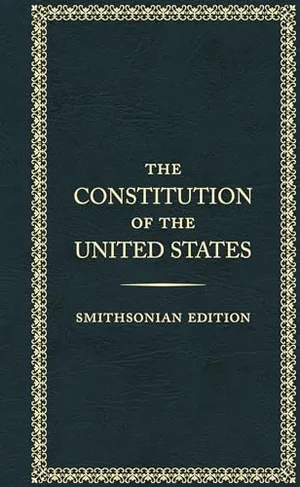How the Constitution Was Drafted With Hope and Compromise
A Smithsonian curator reflects on the document that was signed this week 237 years ago
:focal(800x602:801x603)/https://tf-cmsv2-smithsonianmag-media.s3.amazonaws.com/filer_public/15/42/15422d82-a53f-444d-bfc0-42a9f08739a2/constitutional_convention_box.jpg)
It is hard to imagine the United States without the Constitution. This short document, drafted in 1787 in a hot and stuffy meeting room in Independence Hall and amended, interpreted, and reinterpreted by generations of Americans, has served as the nation’s blueprint and the embodiment of its civic values and ideals.
Born in revolutionary zeal and possibilities, the founding generation faced the challenge of how to establish a working system of government that honored the ideal of self-rule. They hoped that a common commitment to a government of “the people” would create a prosperous future, yet feared that self-interested factions across the citizenry and between the states would tear that dream apart.
The former colonists placed most of the governing functions in the established state governments and greatly limited the powers of the Confederation Congress. However, this federation of states faced economic instability, internal conflicts, international threats, and rising fears of violent insurrections. With a growing group of political leaders arguing that a stronger national authority was needed to safeguard the fragile republic, the Confederation Congress authorized a convention to consider changes to its governing authority.
In May 1787, delegates made up of the country’s white male political elite began to arrive in Philadelphia with the task of proposing amendments to the Articles of Confederation. The delegates included George Washington and Benjamin Franklin, who gave the proceeding credibility, and new, younger leaders, such as James Madison and Alexander Hamilton, who would lead the fight to get the Constitution accepted. All states but Rhode Island sent representatives. At Independence Hall, with curtains drawn and doors guarded, the delegates met in secrecy and quickly abandoned their instructions. Instead, they began to draft a completely new structure for the national government.
The Constitution of the United States, Smithsonian Edition
This striking edition contains the foundational document of the United State's governance to help you navigate the latest conversations about the supreme law of the land. With a sleek and dignified design, its features make it the perfect keepsake.
With George Washington elected the convention’s president, for four months the delegates argued over state versus national authority, taxation, representation, the responsibilities of the branches of government, and slavery. Southern states that economically relied heavily on slave labor extracted concessions for their ongoing participation, gaining additional congressional representation through the clause that counted a slave as three-fifths a person and a fugitive slave provision that required the return of persons bound in service who escaped to another state.
The delegates modeled the national government after the existing structures in several states that had bicameral legislatures, an executive branch, and a judiciary and carefully considered how to balance the power of each. In the end, the Constitution they wrote was a document of compromises that would turn the federation of states operating under the Articles of Confederation into a federal system of government that designated powers of authority between a national government and the states, and their shared responsibilities.
As advocates turned to the task of ratification by the states, they saw a growing demand to add a bill of rights to the Constitution to protect individual freedoms. In 1789 the first Congress of the federal government condensed the numerous proposals that would become the first ten amendments known as the Bill of Rights. Together, the Declaration of Independence, the Constitution, and the Bill of Rights have helped define the meaning of liberty, freedom, and democracy for generations of Americans.
It was an imperfect start. Most of the era’s leaders still believed in the privileged entitlements of elites that limited the voice of ordinary people in deciding the direction of the country. They recognized and accepted the institution of slavery, and they willingly embraced the suppression of Native Americans. Yet when they abandoned a monarch and based their new country on “the consent of the governed,” they put the nation on a democratic path that has expanded on these ideals, however unevenly, throughout its contested history.
The men who met in Philadelphia would be astonished at the enduring longevity of their work. The Constitution has provided a framework and bulwark through political unrest, a civil war, economic crises, election disputes, and international conflicts that have threatened the ongoing existence of the union. While at times the Constitution has been used as an obstacle for dramatic change, it has also been an evolving vehicle for expanding the rights and freedoms for many. In their effort to establish “a more perfect union,” they created a governmental structure that has proven to be unifying and adaptable over centuries of incredible social change.
The Constitution of the United States, Smithsonian Edition is available from Smithsonian Books. Visit Smithsonian Books’ website to learn more about its publications and a full list of titles.
Excerpt from The Constitution of the United States, Smithsonian Edition; Introduction © 2022 by Smithsonian Institution
A Note to our Readers
Smithsonian magazine participates in affiliate link advertising programs. If you purchase an item through these links, we receive a commission.

